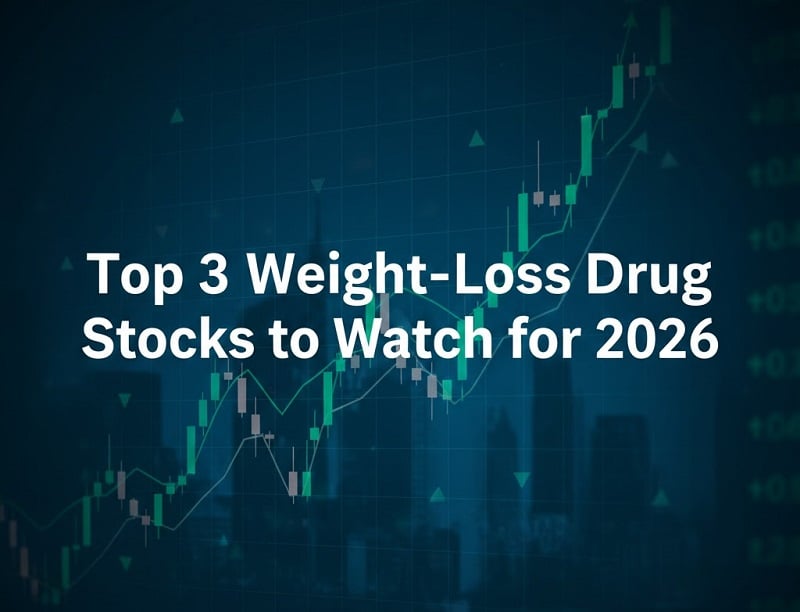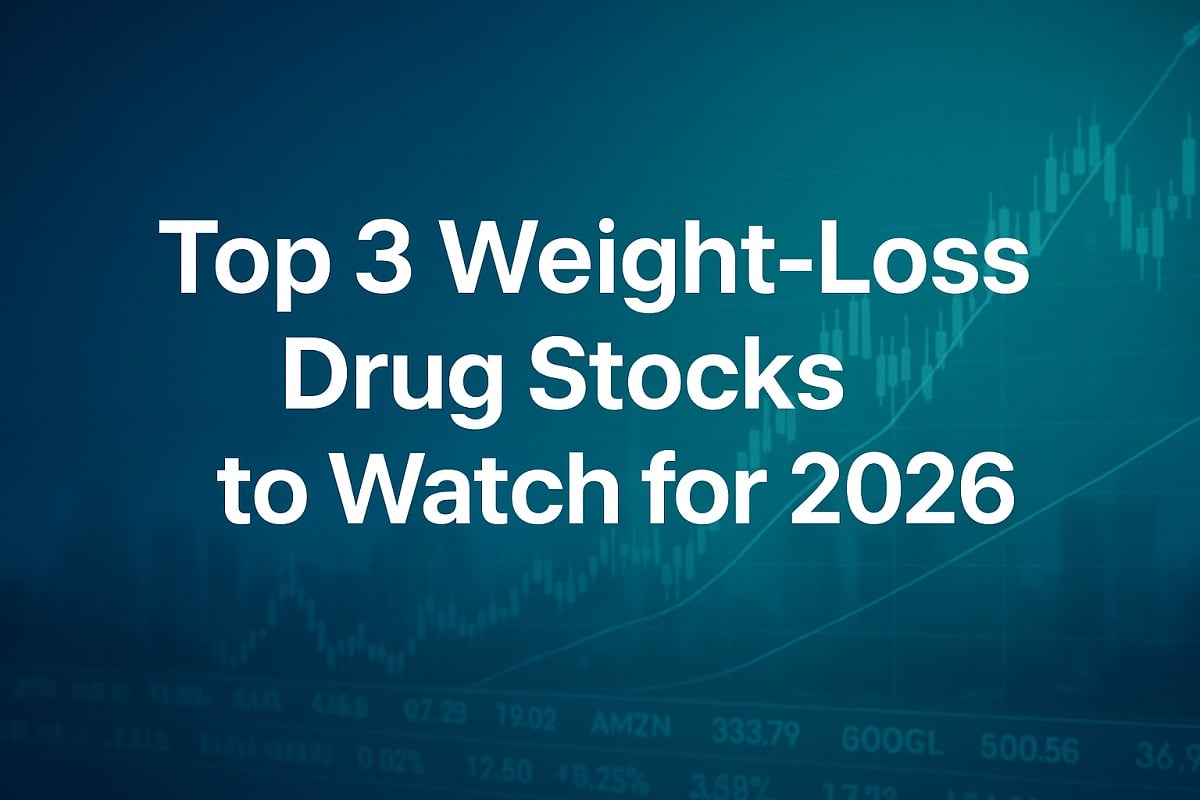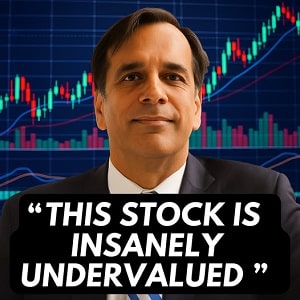The weight-loss drug sector has entered a new chapter. After two years of explosive hype, 2025 delivered sharp corrections, supply headaches, and pricing debates. Yet every major indicator points to 2026 as the true breakout year: shortages are ending, Medicare prices are capped at affordable levels, oral pills are nearing approval, and global adoption is only just beginning.
Morgan Stanley now sees the market growing from roughly $20 billion today to $150 billion by 2035 — a tenfold expansion in a single decade. This article examines the three companies best positioned to dominate that growth and explains why their stocks deserve serious consideration heading into 2026.

Why 2025 Was the “Shakeout Year” — And Why 2026 Is the Real Money Year
2025 was brutal for anyone who bought at the peak. Novo Nordisk lost almost half its value, Eli Lilly gave back a third at one point, and smaller names got crushed. The reasons were clear:
- Compounded semaglutide flooded the U.S. market
- Employers panicked at skyrocketing claims and slapped on prior-authorization walls
- Investors feared “peak GLP-1” and endless price cuts
But almost everything that scared the market in 2025 is now fixing itself:
- Both semaglutide and tirzepatide came off the FDA shortage list in late 2025 → compounded copies are disappearing fast
- Medicare Part D price negotiations locked in net prices of $35–$50 per month starting January 2026
- Supply is finally catching up — Wegovy and Zepbound are in stock at pharmacies nationwide for the first time
- Employers are shifting from blanket denials to smart tiering that still drives huge volume
In short, 2025 shook out the weak hands. 2026 is when the real, sustainable growth phase begins.
How GLP-1 Drugs Actually Work — And Why the New Ones Are Even Better
GLP-1 (glucagon-like peptide-1) is a gut hormone your body releases after eating. Modern drugs mimic or amplify it, producing four powerful effects:
- Slows stomach emptying → you stay full longer
- Signals the brain’s appetite center to turn down hunger
- Boosts insulin and lowers blood sugar (great for diabetes)
- Reduces liver fat and inflammation
First-generation drugs (semaglutide/Ozempic, liraglutide/Saxenda) only hit the GLP-1 receptor. Second-generation drugs add GIP (tirzepatide/Mounjaro/Zepbound) → 20–22% average weight loss. Third-generation “triple agonists” add glucagon (retatrutide, VK2735, MariTide) → early data show 24–30% loss and major muscle-sparing benefits. Next wave: amylin co-agonists (CagriSema, eloralintide) that preserve lean mass even better.
The result? We’re moving from “very good” drugs to “potentially curative” ones for obesity and its related diseases.
The Three Weight-Loss Drug Stocks Best Positioned for 2026
After screening the entire GLP-1/obesity universe, only three stocks check every box that matters for 2026: real catalysts, real supply, and real upside. Here they are — the only weight-loss drug stocks you need on your radar right now:
- The beaten-down former king trading at its cheapest valuation in years — with the strongest pipeline catalyst of the entire sector coming mid-2026
- The $1 trillion juggernaut that just took the crown — and is about to launch the first serious once-daily oral pill
- The $3–4 billion pure-play biotech that could 5–10× overnight on a single Phase 3 headline or Big Pharma buyout
1. Novo Nordisk (NYSE: NVO) — The Fallen Leader Poised for the Strongest Rebound
Novo Nordisk invented the modern GLP-1 category with Ozempic and Wegovy. At its peak in mid-2024, the company briefly became Europe’s most valuable corporation. Then came the reality check: Eli Lilly gained share, compounded semaglutide flooded the market, and a failed Alzheimer’s trial triggered a 45%+ decline in 2025.
That sell-off has left Novo trading at its cheapest forward earnings multiple in years while still generating enormous cash flow and paying a growing dividend (current yield above 2.5%).
What changes in 2026?
Supply is no longer a constraint. Wegovy is widely available at all dose levels for the first time since launch. A new U.S. direct-to-consumer program prices the drug at $349 per month for cash-pay patients, and the recent Medicare agreement guarantees volume at sustainable net prices.
The pipeline is the real catalyst. CagriSema — a combination of semaglutide and the amylin analog cagrilintide — is widely expected to deliver 23–25% average weight loss when Phase 3 data land in the first half of 2026. That would reclaim best-in-class status. Meanwhile, oral amycretin advances into Phase 3, offering the holy grail of a once-daily pill with potentially greater efficacy than current injectables.
Wall Street’s consensus price target implies 30–40% upside from current levels, and several prominent analysts have labeled Novo the single most attractive large-cap healthcare recovery story for 2026.
2. Eli Lilly (NYSE: LLY) — The New King with Room to Run
Eli Lilly has been the clear winner of the past two years. Mounjaro and Zepbound (both tirzepatide) generated more than $10 billion in a single quarter in 2025, pushing Lilly past the $1 trillion market-cap milestone — the first pharmaceutical company ever to reach that mark.
Tirzepatide’s dual GLP-1/GIP mechanism consistently outperforms semaglutide head-to-head, delivering average weight loss above 20% and superior glycemic control. Manufacturing investments of more than $20 billion have largely solved earlier supply bottlenecks.
The 2026 story centers on the oral franchise. Orforglipron, Lilly’s once-daily pill, completed two pivotal Phase 3 trials showing 15–17% weight loss with a clean safety profile. Regulatory submission is expected before year-end 2025, with approval and launch highly likely in the first half of 2026. An oral GLP-1 at parity or better efficacy would dramatically expand the addressable market and blunt the need for weekly injections.
Additional late-stage candidates — retatrutide (triple agonist) and eloralintide (amylin) — keep Lilly at the forefront of innovation through the end of the decade.
Even after the historic run, most analysts maintain Buy ratings with price targets implying further double-digit gains, supported by 2026 earnings growth estimates above 35%.
3. Viking Therapeutics (NASDAQ: VKTX) — The Small-Cap Rocket Fuel
While Novo and Lilly dominate headlines, Viking Therapeutics offers the highest-upside pure play in the sector.
Its lead candidate, VK2735, is a dual GLP-1/GIP agonist virtually identical in mechanism to tirzepatide. Phase 2 results released in 2024 showed 15% placebo-adjusted weight loss in only 13 weeks with no plateau — results that stunned analysts and sent the stock soaring.
In an extraordinary feat for a $3–4 billion company, Viking completed enrollment of two large Phase 3 obesity trials (VANQUISH-1 and VANQUISH-2) in November 2025, putting topline data on track for the second half of 2026. An oral version of VK2735 is already in Phase 2, with results expected mid-year.
Big Pharma is watching closely. Pfizer, Amgen, and others have signaled willingness to acquire late-stage metabolic assets rather than build from scratch. A positive Phase 3 readout would make Viking the most obvious takeover candidate in biotech, potentially at multiples of the current share price.
The risk is binary — clinical or regulatory setback would be painful — but the reward asymmetry is unmatched: many sell-side firms model fair value between $150 and $300 per share on success or acquisition, versus roughly $30–$35 today.
One Bonus Stock I’m Watching Closely for 2026: Amgen (NASDAQ: AMGN)
Amgen’s MariTide (AMG-133) is a monthly injection that showed 23–25% weight loss at 52 weeks in Phase 2 — with best-in-class muscle preservation. Phase 3 starts enrolling in early 2026, and a positive readout would make it the first true once-monthly option. At only 13× forward earnings and a 3%+ dividend, Amgen offers a lower-risk, lower-volatility way to play the next wave.
The bottom line: The weight-loss revolution is just getting started. 2026 will separate the winners from the also-rans — and the three stocks above (plus one bonus name) are the clearest ways to profit.
The Real Risks You Must Understand Before Buying Any Weight-Loss Stock
No sector grows straight up. Key risks heading into 2026–2030:
- Long-term pricing erosion: Analysts expect list prices to fall from ~$1, junior per month today to $300–$500 by 2030
- Muscle-loss controversy: Early GLP-1s caused 30–40% of weight loss to come from lean mass; newer dual/triple agonists look much better, but perception lingers
- Gastrointestinal side effects still drive 5–10% discontinuation rates
- Competition is exploding: Amgen (MariTide monthly injection), Pfizer, Roche, AstraZeneca, Zealand Pharma, and dozens of Chinese players are all in late-stage trials
- Regulatory or manufacturing hiccups could delay oral launches
That said, the leaders have the deepest moats (patents into the 2030s, massive manufacturing investments, and proven reimbursement relationships).

Final Thoughts: Positioning for the Next Leg Higher
The weight-loss drug market is transitioning from scarcity to abundance, from U.S.-centric to global, and from injectable-only to convenient oral options. Novo Nordisk offers the deepest value and strongest dividend, Eli Lilly delivers the most reliable high-quality growth, and Viking Therapeutics provides life-changing upside for those comfortable with biotech volatility.
Taken together, these three stocks cover the full spectrum of risk and reward in a sector that still has a decade or more of powerful expansion ahead. As 2026 approaches, the combination of resolving supply constraints, favorable reimbursement changes, and major clinical/readout catalysts makes this one of the most compelling healthcare investment themes available today.
Weight-Loss Drug Stocks FAQ – 10 Questions Investors Ask Most Right Now
Is it too late to buy weight-loss stocks after the huge run in 2023–2024?
No. The market is still under 15% penetrated in the U.S. and under 5% globally. Peak sales estimates continue rising, and 2026–2030 is expected to dwarf the early gains.
Novo Nordisk is down 45% in 2025 — is it finally a safe buy?
Yes, according to most Wall Street analysts. Its forward P/E is at multi-year lows, the dividend yield exceeds 2.5%, supply constraints are resolved, and CagriSema Phase 3 data in mid-2026 could be the single biggest catalyst in the sector.
Which company actually has the better drug — Novo or Lilly?
Right now, Eli Lilly’s tirzepatide (Zepbound/Mounjaro) delivers superior average weight loss of about 21% versus 15–17% for Novo’s Wegovy. However, Novo’s upcoming CagriSema and amycretin have the potential to take the lead again in 2026–2027.
When do the oral weight-loss pills launch?
Eli Lilly’s orforglipron is expected to receive FDA approval and launch in the first half of 2026. Novo’s oral amycretin enters Phase 3 in Q1 2026 with launch likely in 2027–2028. Viking’s oral VK2735 reports Phase 2 results mid-2026.
Will Viking Therapeutics get bought before Phase 3 data?
It’s possible, but most analysts expect Big Pharma to wait for Phase 3 topline results in the second half of 2026. Positive data would almost certainly trigger competing bids well above current levels.
How low could prices actually go?
Medicare net prices are already capped at roughly $35–$50 per month starting January 2026. Cash-pay and international pricing is trending toward $300–$500 per month by 2030, which remains highly profitable for the leaders.
Are people gaining the weight back when they stop the drugs?
Yes, on average about two-thirds of the weight returns within a year without continued treatment and lifestyle changes. This supports the case for long-term or lifelong use and stable recurring revenue.
What about the muscle-loss scare?
Early GLP-1 drugs caused 30–40% of total weight loss to come from lean mass. Newer dual and triple agonists (tirzepatide, VK2735, MariTide, CagriSema) preserve muscle far better, with 70% or more of loss coming from fat.
Any other weight-loss stocks worth owning besides the big three?
Amgen (MariTide monthly injection, Phase 3 starting 2026) and Hims & Hers (telehealth and compounded offerings) are the most frequently cited alternatives. Pfizer, Roche, and Structure Therapeutics remain further behind.
If I can only buy one weight-loss stock today for the next 3–5 years, which should it be?
- For safety, dividend income, and deep value: Novo Nordisk
- For the fastest growth and oral-pill leadership: Eli Lilly
- For 5–10× upside potential: Viking Therapeutics
The best choice depends on your risk tolerance, but all three deserve consideration for 2026 and beyond.
































